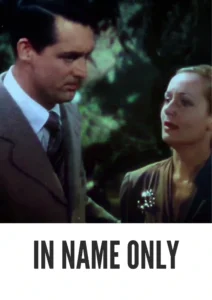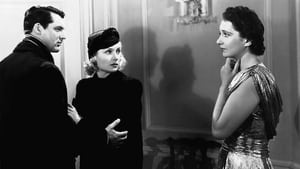Video Sources 0 Views
- In Name Only 1939 Colorized


Synopsis
Table of Contents
ToggleA Love Story Unveiled: In Name Only (1939) in Stunning Color

Step back in time to experience the heartwarming romance of In Name Only, a captivating drama from 1939, now beautifully colorized for a viewing experience that brings a fresh perspective to this timeless classic. Starring Cary Grant and Carole Lombard, this film explores themes of love, marriage, and societal expectations with depth and grace. Perfect for fans of classic romance and those who appreciate the golden age of Hollywood, this HD download offers a chance to rediscover a cherished film in a whole new light.Some alternate titles to the movie include “False Marriage”.
In Name Only Storyline: A Tale of Love and Societal Expectations
In Name Only tells the story of Alec Walker (Cary Grant), a wealthy man trapped in a loveless marriage with the cold and calculating Maida (Kay Francis). Alec’s life takes an unexpected turn when he meets and falls in love with Julie Eden (Carole Lombard), a warm-hearted widow who works as a doctor.As Alec and Julie’s feelings for each other deepen, they face numerous obstacles, including Maida’s refusal to grant Alec a divorce and the disapproval of Alec’s family, particularly his mother (Beryl Mercer), who is fond of Maida. Despite these challenges, Alec and Julie are determined to be together, leading to a poignant exploration of love, sacrifice, and the courage to defy societal norms. In Name Only is a touching and beautifully acted drama that resonates with audiences even today.
Movie Cast
The film features a stellar cast of actors who bring this emotional story to life:
- Cary Grant as Alec Walker
- Carole Lombard as Julie Eden
- Kay Francis as Maida Walker
- Charles Coburn as Mr. Walker
- Helen Vinson as Suzanne
- Katharine Alexander as Mrs. Suzanne
Movie Genre
In Name Only falls into the genre of romantic drama, with elements of social commentary and emotional depth that are characteristic of Hollywood’s Golden Age. Its exploration of complex relationships and societal expectations makes it a compelling and thought-provoking film.
Historical Context: Hollywood’s Golden Age
Released in 1939, In Name Only represents a significant era in Hollywood history, showcasing the studio system at its peak and the popularity of romantic dramas that explored contemporary social issues. The film was produced during a time when Hollywood was producing some of its most iconic and enduring films, and In Name Only reflects the high production values, talented actors, and sophisticated storytelling that defined this era.
Colorization Details
This colorized version of In Name Only has been meticulously restored using modern digital techniques, enhancing the visual appeal while preserving the film’s original emotional impact. The colorization process involved carefully analyzing the grayscale tones of the original black and white footage and assigning appropriate colors to each scene. This painstaking process brings new life to the characters and settings, making the story even more engaging for modern audiences. While opinions on colorizing classic films may vary, it introduces these films to a broader audience, ensuring their legacy for future generations.
Technical Details
- Director: John Cromwell
- Screenplay: Richard Sherman
- Based on: the novel “Memory of Love” by Bessie Breuer
- Cinematography: Lee Garmes
- Edited by: William Hamilton
- Production Company: RKO Radio Pictures
- Distributed by: RKO Radio Pictures
- Runtime: 95 minutes
Technical Specifications
- Download Format: MP4
- Resolution: HD (1080p)
- Compatibility: Compatible with most devices, including smartphones, tablets, computers, and smart TVs.
Reviews and Critical Reception
In Name Only (1939) is celebrated for its compelling performances, emotional depth, and sophisticated exploration of social issues. Critics praised the film for its sensitive handling of complex relationships and its ability to resonate with audiences on a personal level. As a beloved classic of Hollywood’s Golden Age, In Name Only continues to be appreciated for its timeless themes and enduring appeal.
FAQs
- Q: What is In Name Only about?
- A: In Name Only is a romantic drama about a man trapped in a loveless marriage who finds love with another woman, exploring themes of societal expectations and personal happiness.
- Q: Is In Name Only (1939) a well-known film?
- A: In Name Only is a recognized classic from Hollywood’s Golden Age, known for its stellar cast and emotional storyline.
- Q: Is this version of In Name Only colorized?
- A: Yes, this version has been professionally colorized to enhance the viewing experience.
- Q: What makes In Name Only interesting for classic film fans?
- A: In Name Only offers a glimpse into Hollywood’s Golden Age, showcasing its high production values, talented actors, and sophisticated storytelling.
- Q: What is the download format?
- A: The download format is MP4, which is compatible with most devices.
- Q: What resolution is the download?
- A: The resolution is HD (1080p), providing a high-quality viewing experience.
Download Now in HD!
Watch In Name Only Today!
















